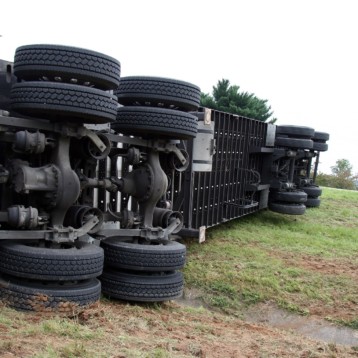There are many projects in the world that are focused on reducing the use of fossil fuels, bringing about a more green future.

Some of these are making use of carbon capture and storage. This method can be utilized to reduce the size of a project’s footprint by up to huge percent.
What is CCS
Carbon capture and storage, or CCS, are the methods of storing and utilizing CO2 in order to reduce carbon emissions. The process can be accomplished by injecting fluid into deep underground geological formations.
This process can be used to store CO2 in depleted oil and gas reservoirs, coalbeds, or other appropriate geological formations. However, CO2 can only be stored in these places if the site is carefully chosen. Typically, the CO2 is transported by pipeline or ship to the storage site.
Carbon capture and storage can capture up to 90% of CO2 from industrial processes. For this reason, it is a critical component of the energy transition.
Challenges
There are two major challenges to carbon capture and storage. Firstly, the technology itself is relatively complex. It is also very expensive. Moreover, implementing the process at scale would require rapid growth over the next several decades.
Fortunately, the European Commission has acknowledged the importance of carbon capture and storage technologies. As such, it included them in the Green Deal, a plan to reduce European CO2 emissions by 50% by 2050.
Injection CO2 Into An Oil Reservoir
Various techniques are being investigated for the permanent storage of CO2. One of the more popular is the enhanced oil recovery method, which involves injecting CO2 into an oil reservoir. Other CO2 storage options include using deep saline aquifers and abandoned oil and gas fields.
Projects Around The World
Carbon Capture and storage projects are an important way to decarbonize the global energy system. They are based on technology that aims to capture and store the carbon dioxide (CO2) produced during fossil fuel combustion. This CO2 is transported underground and stored in deep geological formations.
In addition to being a valuable source of clean energy, CCS is considered a critical tool in the effort to reach net zero greenhouse gas emissions by the end of the century.
Most are aimed at reducing emissions from fossil fuel power plants, petrochemical facilities, and fossil fuel-adjacent industries.
Capturing CO2 From The Atmosphere
Several projects also capture carbon dioxide directly from the atmosphere. The United States Department of Energy announced $24 million in research funding to study direct air capture. These projects have the potential to produce “blue” products, such as carbon free hydrogen.
Removing CO2 From Lime And Cement Production
A second technique, called indirect heated carbonate lopping, is used to remove CO2 from lime and cement production. The project aims to reduce the costs associated with CO2 avoidance.
There are many other industrial-scale carbon capture and storage projects. They are located all over the world and in various stages of development. As the global carbon emissions increase, so does the need for new technologies.
Impact On Local Communities
The effects of carbon capture and storage (CCS) are vast and varied. They include reducing air pollution, preventing the release of important greenhouse gas, and keeping it underground.
These benefits are accompanied by trade-offs for other effects. However, CCS has a limited return on investment for communities.
While CCS and other clean energy technologies are a solution to climate change, they are not without flaws. For example, CCS/CCUS is an unproven technology scheme that could disproportionately harm disadvantaged communities. Moreover, there is little evidence that CCS is the best possible solution to climate change.
In addition, CCS/CCUS has already cost taxpayers billions of dollars. Similarly, Big Oil & Gas has historically relied on pitting neighbor against neighbor. It has also been less transparent about potential health and environmental costs.
The use of CCS/CCUS is not without risks, especially for environmental justice communities. For example, a pipeline malfunction can cause an explosion. Additionally, there are risks of toxic emissions.
There are also a number of ways to compensate communities for the perceived impacts of CCS. These range from host fees to community compensation.
Community compensation has received attention as a way to help restore the perceived imbalance between local impacts and national benefits. Several academic studies have looked at the role of community compensation.
It is also important to develop a legal framework that protects the rights of local communities. This can ensure that their voices are heard during planning and implementation decisions.
Drawbacks to the Technology
In order to curb global warming, the world will need to reduce its carbon dioxide emissions.
Capturing and storing CO2 in geologic storage is one way of doing this. However, there are some drawbacks to this technology.
It Requires A Lot Of Energy
The first is that the technology requires a lot of energy to run. It is also expensive. Another problem is that it almost only captures emissions from fossil fuel plants. This means that the process of removing carbon dioxide must become more efficient.
Safety Of The Process
Another issue with CCS is the safety of the process. When the CO2 is being transported, impurities in the stream can damage pipelines and cause explosions. There have also been reports of CO2 leaking out of underground storage.
These problems could be solved through the use of good regulations. Aside from preventing leaks, it is essential to choose a quality storage site. Selecting the wrong location can result in unreliable storage, which can lead to carbon dioxide leakage.
Currently, there are 15 direct air capture (DAC) facilities in the US and Europe. These facilities have the capability to capture up to 1 million tonnes of CO2 per year.
Other potential locations for CO2 storage include the ocean. Ocean carbon storage has been discussed at depths of over 3,000 meters. But there are some concerns about the health of marine life. Until such a storage method has been fully tested, ocean storage isn’t a viable option.
Final Word
Through the research of carbon capture technologies, we have come to understand the importance of reducing our emissions and preserving our environment.
Carbon capture technologies can be used on large-scale or small-scale projects in order to mitigate the effects of climate change. We must continue to research, develop and implement these technologies if we are to have a successful transition to a greener future.










